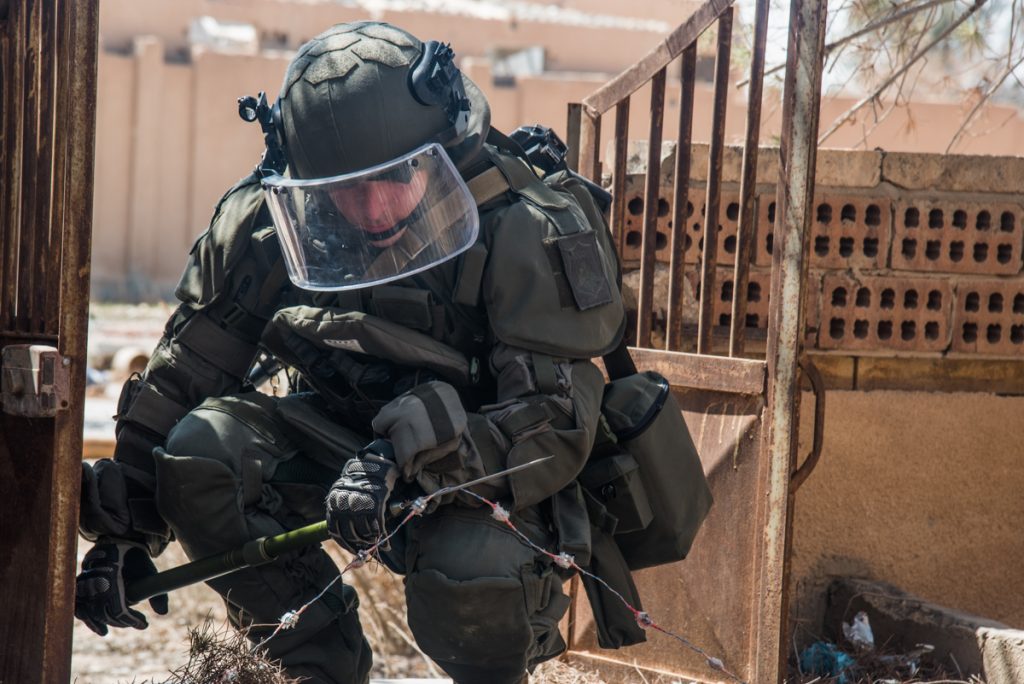Sapper suit and equipment
Every year on the planet from mines, unexploded shells, bombs, grenades and similar “surprises” that you can stumble upon anywhere, even in your own garden, kill about 25,000 people. These are almost two army divisions! Specialists have to deal with no less than 700 types of mines and mine-like objects. Moreover, every sapper, or, in other words, an explosives technician, especially a military one, must know not only all these types without exception, but also the main ammunition used by the armies of the world. For example, Russian sappers who participated in a humanitarian demining operation in the countries of the former Yugoslavia had to deal with unexploded submunitions (the so-called elements of various types of cluster systems): the British Mk1 and the American BLU 97A / B and B / B. They are even more dangerous than standard mines, since the piezoelectric fuse used in them is so perfect that it is able to generate the current necessary to activate the detonator, after a long, calculated years in the ground!
Search gear
At the disposal of the sapper today there are also ultra-modern mine detectors for detecting various types of mines. In addition to the highly reliable and significantly improved in recent years hand-held devices that react to metal, other types of devices are being produced. So, for example, in the late 1990s, the HSTAMIDS (Handheld Standoff Mine Detection System) system entered service with American sappers, in which, in addition to the usual metal detector, there is a mini-radar showing at what depth and in what position the mine is located (aviation, ASTAMIDS , and automotive, GSTAMIDS, system modifications). Combined mine detectors with passive detection of microwave radiation are being developed (“smart” mines can scan the space around them), research is underway to place infrared sensors on mine detectors using different

Special suit
No matter how sophisticated modern means of detecting and clearing mines, mistakes do occur, which is why in recent years very effective protective suits have been developed for sappers. A modern special suit of explosives protects against all damaging factors of an explosion, including a shock wave, both direct and reflected (from walls, irregularities, etc.). It includes a protective jacket and pants, a helmet with bulletproof glass, gloves made of nomex or kevlar, mine boots, various support equipment, as well as additional armor panels to protect the most vulnerable areas of the body. Of course, such a suit should provide mobility and freedom of movement, because it is designed for work. An important requirement for a suit is the possibility of emergency “leaving” it, for example, if it caught fire or was damaged by an explosion.
Modern protective suits of the highest category, which Russian law enforcement and security agencies mainly buy abroad, are necessarily equipped with built-in voice communication and climate control systems, as well as control of the operating parameters of a protective helmet. A remote control module is mounted on the helmet, and a remote control is hung on the sapper’s hand, over the suit. Naturally, the suit and helmet have autonomous power supply devices designed for long-term operation, sometimes up to eight or more hours. They also power powerful helmet-mounted flashlights.
The climatic system of the high-tech suit, which includes the helmet’s forced ventilation system, not only ensures comfortable work, but also protects the sapper from chemical and bacteriological damaging substances. Special clothing equipped with a liquid system for maintaining a constant temperature is worn under the protective kit, which increases the time of the sapper’s work by 1.5-2 times compared to a conventional protective suit. If necessary, such a suit can be “installed” with a 2 liter drinking water supply system, which flows through a tube directly into the mouth of the explosives engineer.
By the way, the sapper’s communication system with the control room is only wired, since the radio signal can trigger the mine fuse. Simpler samples usually do not provide complete protection against chemical and bacteriological damaging factors, therefore special suits are attached to them, which are worn under a protective kit, and additional elements, such as a respirator, mask, air cylinders, used in such suits (lighter less constraining the movement of the sapper), protective helmets are leaky and not equipped with a remote control system.